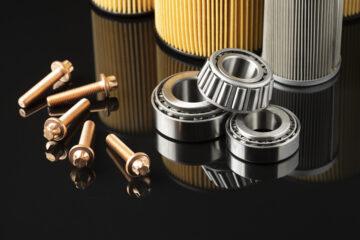When it comes to maintaining your car in top shape, choosing the appropriate automotive parts can have a considerable impact on performance, safety, and longevity. The automotive industry provides numerous possibilities, each with its own set of advantages and disadvantages. We’ll look at the three major types of car parts in this thorough guide: OEM, OE, and aftermarket. By the end of this article, you should be able to make informed selections about which type of parts are ideal for your car and your budget. Whether you’re a vehicle aficionado or a commuter on a daily basis, recognizing the distinctions between these possibilities will enable you to make decisions that are tailored to your individual needs and priorities.
Let’s look into the realm of car parts and see what we can find.
When it comes to repairing or maintaining your car, you may be wondering what the difference is between OEM, OE, and aftermarket automotive parts. Here is a brief overview of each type of part:
- OEM: Original Equipment Manufacturer parts are the parts that are originally installed in a vehicle by the manufacturer. They are made to the exact specifications of the manufacturer and are typically of the highest quality. OEM parts are often more expensive than aftermarket parts, but they are generally considered to be the best option for repairs and maintenance.
- OE: Original Equipment parts are also made to the exact specifications of the manufacturer, but they are not necessarily made by the manufacturer. OE parts are often made by third-party suppliers that have been approved by the manufacturer. OE parts are typically less expensive than OEM parts, but they are still of high quality.
- AFTERMARKET: Aftermarket parts are not made by the original equipment manufacturer or an approved supplier. Aftermarket parts are often made by generic manufacturers and may not be as high quality as OEM or OE parts. However, aftermarket parts can be a more affordable option for repairs and maintenance.
Here is a table that summarizes the key differences between OEM, OE, and aftermarket automotive parts:
| Term | Definition | Quality | Cost |
|---|---|---|---|
| OEM | Original Equipment Manufacturer | Highest | Most expensive |
| OE | Original Equipment | High | Less expensive than OEM |
| Aftermarket | Not made by the original equipment manufacturer | Varies | Least expensive |
Your specific requirements and financial situation will ultimately determine the finest kind of automobile part for you. OEM components are the greatest choice if you want the highest quality parts and are willing to pay more. Aftermarket or original equipment components can be a better option if you’re looking for a more economical solution. Before selecting a choice, it is critical to conduct due diligence and evaluate costs from several vendors.
Here are some additional things to consider when choosing automotive parts:
The make and model of your vehicle.
The severity of the problem.
Your budget.
The warranty that is offered with the part.
The reputation of the manufacturer.
It is also a good idea to get a second opinion from a qualified mechanic before making a decision.
Here are some additional tips for choosing automotive parts:
Make sure the part is compatible with your vehicle. Not all parts are created equal, and it is important to make sure that the part you choose is compatible with your vehicle. You can usually find this information in your vehicle’s owner’s manual.
Read reviews before you buy. There are many websites and forums where you can read reviews of automotive parts. This can be a helpful way to get an idea of the quality of the part and whether it is a good fit for your needs.
AutoPartsWAY.ca is the most reputable source for auto parts in Canada. They carry OEM, OE and Aftermarket parts.



